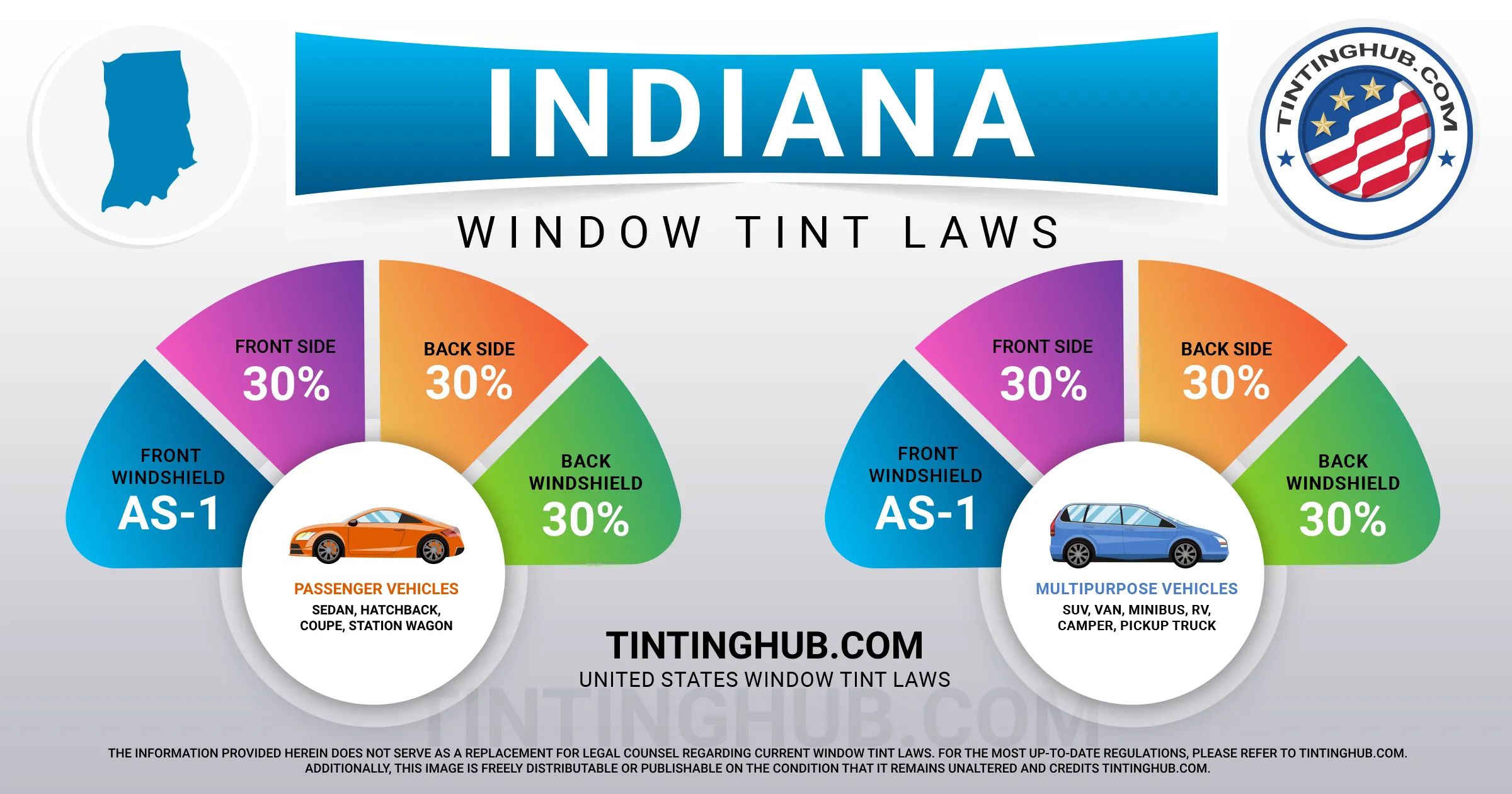Indiana Window Tint Laws (Last Update 2024)

When it comes to car window tinting in Indiana, knowledge is your best friend. The laws governing window tinting have been in effect since 2003, and it’s crucial to be well-informed to ensure compliance and enjoy the benefits of tinted windows without legal troubles. In this article, we’ll delve into Indiana’s car window tinting regulations, covering darkness, reflection, and additional rules to help you navigate the road legally and comfortably.

Window Tint Darkness: What’s Permissible in Indiana?
Indiana’s window tint darkness is defined in terms of VLT, or Visible Light Transmission, which measures the percentage of visible light allowed through your car windows. These regulations differ between sedans and SUVs or vans.
Tint Darkness for Sedans
- Windshield: Non-reflective tint is allowed above the manufacturer’s AS-1 line.
- Front Side Windows: Must allow more than 30% of light in.
- Back Side Windows: Must allow more than 30% of light in.
- Rear Window: Must allow more than 30% of light in.
Tint Darkness for SUVs and Vans
- Windshield: Non-reflective tint is allowed above the manufacturer’s AS-1 line.
- Front Side Windows: Must allow more than 30% of light in.
- Back Side Windows: Any darkness can be applied several (unspecified) inches from the top of the window.
- Rear Window: Any darkness can be applied several (unspecified) inches from the top of the window.
Window Tint Reflection in Indiana
In addition to darkness regulations, Indiana law also addresses window tint reflection. This is essential because reflective tint can help reduce glare and heat. Compliance with these regulations is crucial for the safety and comfort of all road users.
Tint Reflection for Sedans
- Front Side Windows: Must not be more than 25% reflective.
- Back Side Windows: Must not be more than 25% reflective.
Tint Reflection for SUVs and Vans
- Front Side Windows: Must not be more than 25% reflective.
- Back Side Windows: Must not be more than 25% reflective.
Additional Indiana Window Tint Rules and Regulations
Indiana has further stipulations related to window tinting that you should be aware of:
- Side Mirrors: There are no restrictions regarding side mirrors.
- Restricted Colors: Indiana doesn’t explicitly ban specific tint colors.
- Certificates: Manufacturers of tint film must certify the film they sell in Indiana. When purchasing tint, inquire if the film is certified.
- Stickers: Indiana doesn’t require a sticker to identify legal tinting.
- Medical Exceptions: Indiana allows medical exemptions for special tint for individuals with medical conditions.
- Penalties: Non-compliance with tinting laws may result in Class A or Class C infractions.
Keep in mind that while these regulations apply statewide, interpretations can vary by county or place of residence. Therefore, it’s advisable to double-check this information with your local DMV or law enforcement authorities to ensure compliance with your specific location.
Our information regarding Indiana’s window tint laws is up-to-date as of 2023. However, regulations may change, so if you notice any discrepancies or have updated information, please feel free to contact us so we can make the necessary corrections. We take pride in being a trusted industry leader, providing accurate information on window tint laws to help you stay informed and drive legally.